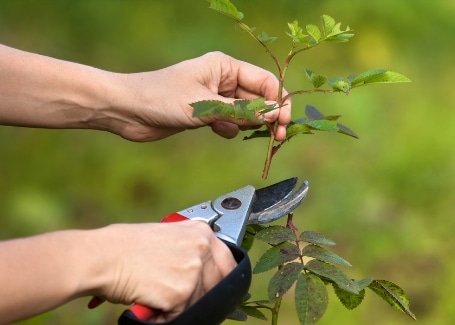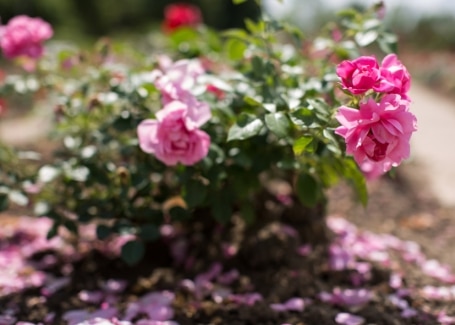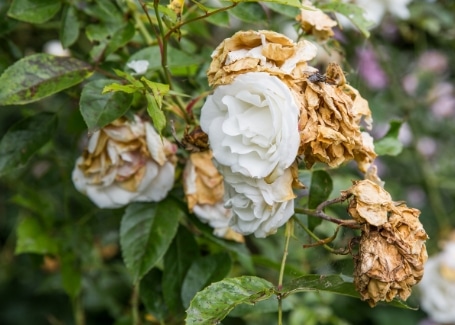Quirky Tips on Caring for Roses
In 19th century Britain, roses were shrubs or climbers with a limited colour range and flowering season. During Queen Victoria’s reign, however, they were bred with roses from the East, introducing bright yellows and oranges, greater hardiness and repeat flowering. Today there are over 1000 varieties on sale (20 years ago), and new varieties are produced each year.
Roses have long been a symbol of love and romance. In 2013, UK residents spent an estimated £262 on them for Valentine’s Day alone.
Here we share our quirky top tips on caring for roses, from how to prune them to planting them with plants that help repel their common pests.
Quirky Tips on Caring for Roses
Rough prune—rough pruning your roses by cutting each plant to half its height. This removes old wood and encourages the development of strong healthy stems. It is much easier than the traditional pruning method but produces equally good results.

Overcrowding—avoid overcrowding roses with other plants, or with long grass growing around the plant. This decreases air circulation around the plant and encourages pests and diseases to take hold.

Spray roses with white vinegar to repel pests naturally without having to resort to chemical pesticides which harm bees and other pollinators. You can also apply vinegar directly to weeds found at the base of your rose for a safe alternative to chemical weed killers.

Egg shells—mix crushed egg shells with your fertiliser or water your roses with the leftover water from your boiled eggs (2 cups per plant) to give them a boost in the vital minerals needed for healthy growth, particularly calcium. Calcium helps the plant to develop strong cell walls, which makes them less susceptible to attack from pathogens. This will also reduce your dependence on landfill—a double plus!


Banana skins—place un-composted banana skins around the roots of an established rose or line the hole with banana skins when planting a new rose. The skins decompose rapidly and release beneficial minerals, like potassium and magnesium, into the soil around the plant. Potassium and magnesium both play essential roles in improving water and nutrient movement from root cells to flower cells, so ensuring your roses have enough of these macronutrients will help to keep their blooms fed, making them bigger and last longer.

Used coffee grounds—spread these around your roses to add nitrogen to the soil and attract worms. Since nitrogen is one of the main components of plant DNA and chlorophyll, plants need nitrogen to create healthy leaves and stems, particularly during periods of rapid growth. Worms are beneficial because they aerate the soil around the plant and eat various forms of bacteria and fungi that might otherwise attack your plant.

Dead-heading—very important for encouraging new blooms on your rose bush is the removal of old heads. This will stop the plant from putting its energy into creating rosehips, allowing it instead to direct its attention towards producing new flowers.

Surround roses with pest-repellent plants like Marigolds (Calendular officinalis) and Chrysanthemum. These plants repel a whole host of pests including slugs, ants and the rose’s nemesis—aphids! Marigolds repel pests with their scent, while Chysanthemum plants contain pyrethrin which is a natural insecticide.
Additional tips:
Cinnamon mixed into compost when planting/re-potting roses acts as a natural fungicide.
Supporting the stems of climbing roses in a horizontal direction encourages the formation of more side branches (the ones which bear flowers), giving you more flowers on the plant.
Additional watering directly onto the roots of a rose during summer will help a rose to bear its best blooms. Even if the plant doesn’t look like it is in need of water and has green leaves, research shows that they benefit from additional water. A good trick is to build up the soil in a circle around the base of the bush and then fill this basin with water.
Make sure your Roses are getting the best. Visit www.lovethegarden.com and check out their full range of Miracle Gro ® Rose, Tree and Shrub products.
With a range of compost and feed, your roses are guaranteed to bloom better than ever before.


If these tips have inspired you to become part of the Cultivation Street campaign, to take your community gardening project to the next level Register Today for 2020

